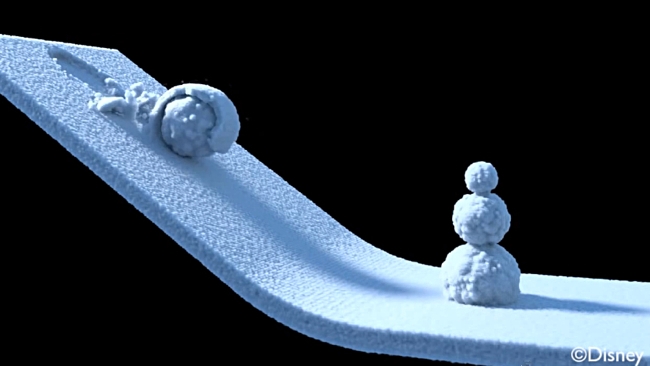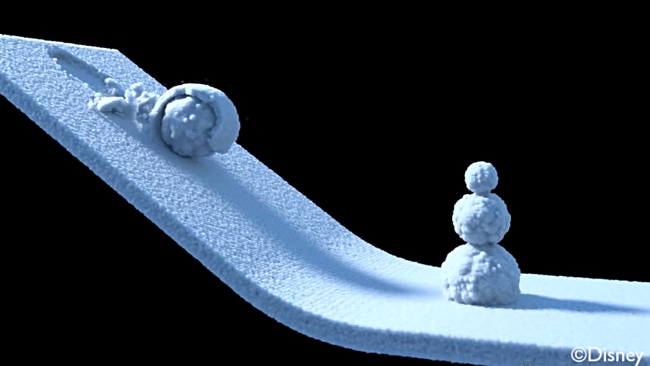
 Disney snow simulation
Disney snow simulation
Here's how Disney uses the power of mathematics to create awesome-looking snow
Computer graphics are becoming so good that it's hard to tell what's real. But creating virtual masterpieces is extremely time consuming and for many productions the cost can be prohibitive. On the other hand, if you get it right, CGI material can be exteremly cost effective compared with the expense of designing and building a giant stage set.
If you had to model not only the appearance but the behaviour on the set, GGI would be barely more cost effective than stop motion animations like Wallace and Gromit. But, increasingly, this is not necessary.
If the object or substance being modelled is made of material that has known, easy to describe, properties, then it's often possible to have a computer generate action without any human intervention apart from telling the computer what's supposed to be happening. Water, flocks of birds and "particles" (where an object is composed of or breaks up into many smaller parts) can all be modelled, as you frequently see these days with smoke and fire.
Snow is difficult
Snow, though, has proved difficult. With movie franchises like Ice Age, there's every incentive to do this well. It's hard enough simulating the behaviour of light reflected from and even through snow, but, as a substance, it has a quite unique set of properties. And there are dozens of types of snow!
Researchers for Disney have come up with some effective answers. The maths may be complicated, but the results are simple to see: natural, convincing snow, not just in its own right, but realistically interacting with other objects and characters as well.
Here's a video that shows off this technique. If you want to listen to the rather accademic-sounding commentary that's fine, but it's also OK if you just want to watch the pictures. Well done to the researchers. This is a truly remarkable achievement!
You can read about this technique in more detail here
Tags: Technology


Comments